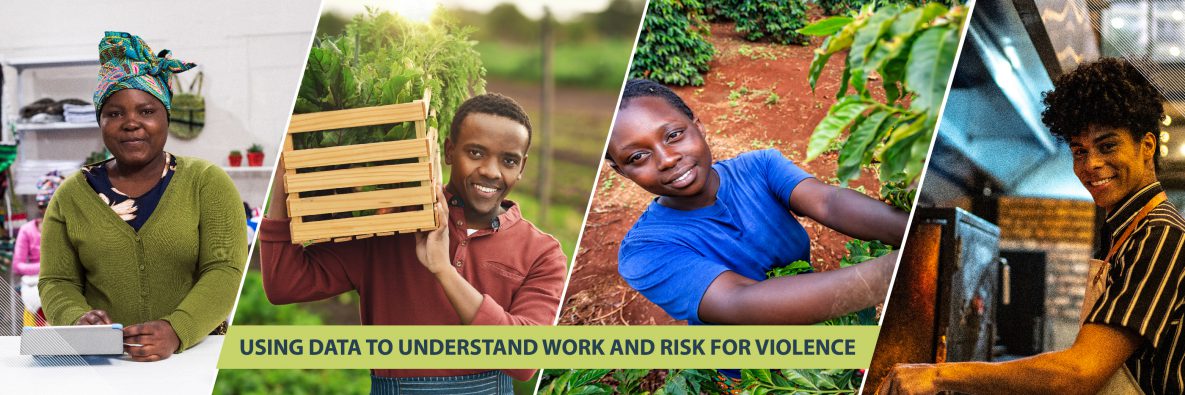Using Data to Understand Work and Risk for Violence
A Review of Kenya and Cote d’Ivoire Violence Against Children and Youth Surveys’ Data

In honor of Global 16 Days Campaign, CDC examined data from the 2019 Kenya and the 2018 Cote d’Ivoire Violence Against Children and Youth Survey (VACS) to understand the relationship between working for wages and violence among children and adolescents. The 2018 Cote d’Ivoire and 2019 Kenya VACS was supported by the President’s Emergency Plan for AIDS Relief (PEPFAR) in their continuing efforts to use data to reduce new HIV infections through preventing sexual violence against girls.
Association Between Work and Risk for Violence
The United Nations Secretary-General’s World Report on Violence Against Children highlights that child labor may expose children to physical and sexual violence.
In Kenya, children ages 13 to 17 (females and males) who worked for wages in the past 12 months were more likely to experience sexual violence (56% vs. 40%) or physical violence (59% vs. 37%) than same-age children who did not work.
In Cote d’Ivoire, children ages 13 to 17 (females and males) who worked for wages in the past 12 months were more likely to experience sexual violence (30% vs. 18%) or physical violence (51.0% vs. 36.1%) than children who did not work.
In both Kenya and Cote d’Ivoire, common work locations included:
- Shop or kiosk
- Farm, plantation, or garden
- Formal office
- Family dwelling
- Factory or workshop
- Construction site, mine, or quarry
- Restaurant, hotel, café, or bar
Understanding the Violence Against Children and Youth Survey
A first step in preventing violence globally is understanding how much it happens, where it occurs, and its impacts on the health and well-being of children and youth. VACS, led by CDC’s Division of Violence Prevention (DVP) as part of the Together for Girls partnership, are nationally representative household surveys designed to measure physical, emotional, and sexual violence against children and youth. To better understand the relationship between violence and work, VACS includes questions on work location, work type, and monetary compensation received for work.
Prevention strategies
VACS Reports for Kenya and Cote d’Ivoire highlight the importance of work as a potential context for experiencing violence among children. As the Cote d’Ivoire and Kenya data demonstrate, entry into the workforce is associated with increased risk for violence. However, there are ways to prevent this violence. INSPIRE: Seven Strategies for Ending Violence Against Children provides evidence-based interventions to prevent and respond to violence against children. Income and economic strengthening interventions highlighted in INSPIRE have the potential to reduce economic risk factors that contribute to child labor and violence against children. Income and economic strengthening can have multiple positive outcomes such as reducing poverty, improving child health and nutrition, supporting education, and empowering children and youth.
Moving Toward a Violence-Free Future
INSPIRE strategies, PEPFAR’s Dreams (Determined, Resilient, Empowered, AIDS-free, Mentored, and Safe) initiative and Global 16 Days Campaign bring continued awareness to the importance of addressing economic and structural drivers of violence and HIV risk.
To explore the stories of people and partnerships working to prevent violence in Kenya, visit Together for Girls Kenya Storytelling. To learn more about VACS and violence prevention, visit DVP Violence Against Children and Youth Survey (VACS) and INSPIRE.
- ‘Champions for Change’ Initiative in Kenya Brings Together Community to Speak Out Against Gender-based Violence
- CDC Training Helps Healthcare Providers Respond to Gender-Based Violence
- Decreasing violence, stigma, and discrimination among female sex workers in Kenya
- Preventing Gender-based Violence through Economic Opportunity